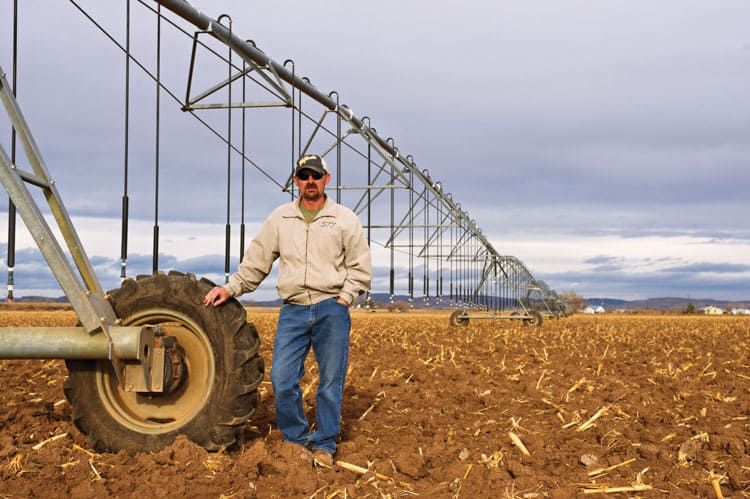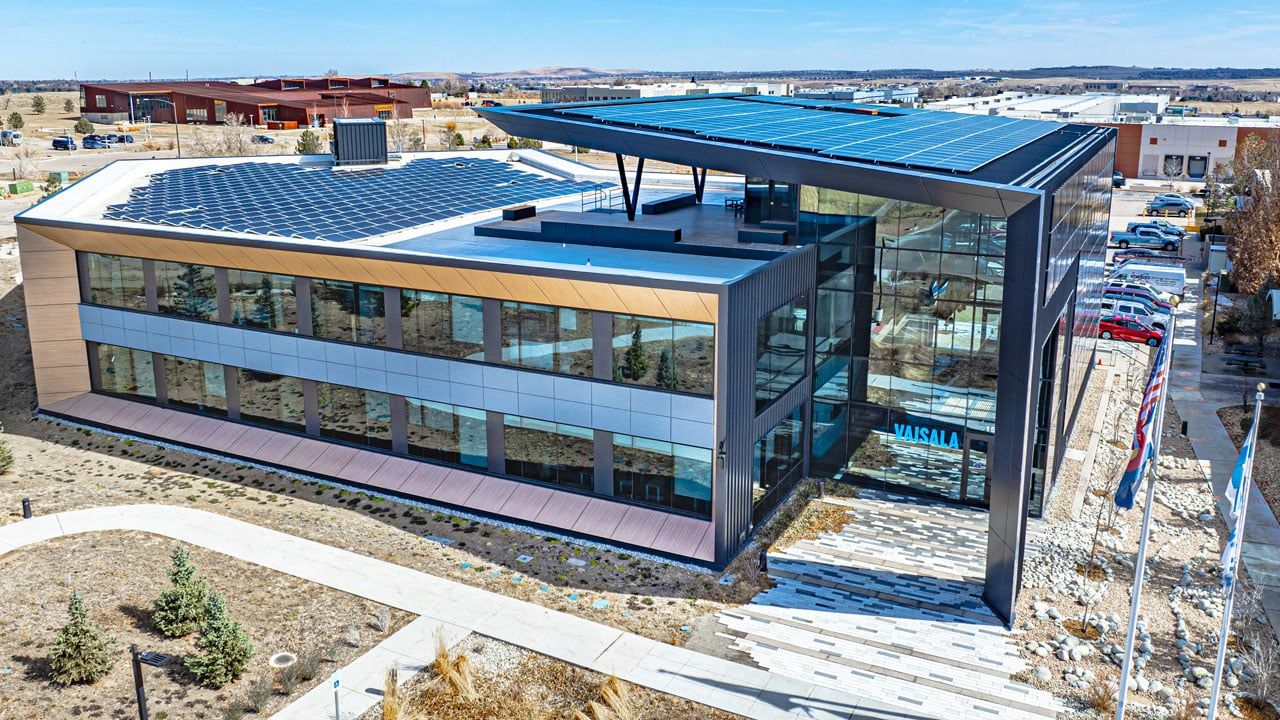Farmers brace for another drought year

WELLINGTON – Troy Seaworth faces the disheartening prospect of planting fewer crops this year and leaving entire fields fallow, all thanks to a drought now in its second year.
The Larimer County farmer expects to receive about half the amount of water that Seaworth Farms uses after snow in the high country melts away. He will have to rely on crop insurance to cover his costs, and he certainly won’t make a profit.
“It’d be like working for free for a year,” said Seaworth, who will instead rely on income from his family’s farms in Nebraska and last year’s profits to make ends meet. “That’s how we make our living.”
SPONSORED CONTENT
Commercial Solar is a big investment, but not an overwhelming one
Solar offers a significant economic benefit for commercial property owners while also positively impacting the environment and offering a path to compliance for new municipal requirements like Energize Denver. A local, experienced solar installer will help you navigate the complexities of commercial solar to achieve financial success for your project.
Seaworth’s grandfather bought 80 acres of farmland north of Wellington in 1945. Troy and his father, Richard Seaworth, farm 2,000 acres today, growing sugar beets, corn, hay and wheat. They employ two full-time workers and two part-timers during the summer.
Coming off a pitiful 2012 snowpack, Northern Colorado farmers have worried for months about what this year’s snowpack will portend. Snowpack in the South Platte River Basin hovered at 60 percent of average earlier this month. It has reached only 70 percent in the Colorado River Basin.
The National Resource Conservation Service said recently that it expects below-average water supplies this spring and summer in the West, with Colorado especially hard hit. Cities are weighing a range of drought restrictions (See story, Page 1).
Despite the drought, Colorado farmers still posted record income of $1.4 billion in 2012, according to the University of Colorado Leeds School of Business Economic Outlook.
In Northern Colorado, a strong sugar beet crop and higher crop prices helped buoy the Seaworths and other farmers despite the dry conditions. They came close to the record 2010 harvest thanks to genetically modified seed that enabled their crop to withstand the scorching heat.
The Seaworths also had enough water because of adequate reservoir levels. This year, however, will test them.
“We need to be over 100 percent snowpack … to build it back,” Troy Seaworth said. Otherwise, “We’re not going to have the reservoir storage.”
The Seaworths began preparing for water shortages long ago. They have installed technology that has cut their per-acre water use from 3 acre-feet to between 1 and 1.5 acre-feet. An acre-foot covers the water needs of about 2 ½ families of four for one year.
Those efforts haven’t come without expense. The family has spent around $120,000 for each of its 17 center-pivot sprinkler systems, and another $5,000 for software to run each one. The Seaworths installed their first such system in 1982; they have been putting the finishing touches on their newest system this year.
The money spent on their systems, Seaworth said, has been recouped in the savings on water.
The family once relied on flood irrigation, which involves watering every other crop row. It’s a common practice among Northern Colorado farmers but uses much more water. The Seaworths have only one field left where they use that technique.
The center-pivot systems with their adjustable nozzles cover their fields more evenly, relying on mapping software that shows which of the farm’s soils need more moisture or could get by with less. The Seaworths also grow grass on fields so that the soil retains some of its moisture during winter.
Additionally, Troy Seaworth monitors soil probes that keep track of moisture with his smart phone.
Also, they have a tractor equipped with Global Positioning System technology that ensures its driver makes fewer passes over cropland while tilling. Otherwise, soil moisture evaporates with too much plowing.
Still, despite all these water-saving improvements, Troy Seaworth knows he will have to plant fewer rows of corn this year.
The Seaworths get a portion of their water from wells fed by an aquifer the length of two football fields on their farm. Like many other farmers, they also rely on runoff from spring snowmelt that feeds reservoirs like Horsetooth and is eventually delivered in irrigation ditches around the farm.
Seaworth Farms has its advantages. Only about 60 percent of Seaworth Farms’ acreage depends on snowmelt. The Seaworths also have diversified their crop portfolio so that they can choose to farm a greater amount of crops that take less water, like pinto beans.
Other farmers, however, do not have the same resources to weather the drought.
“If 100 percent of our stuff was dependent on the snowpack? I’m worried now, but I would be really, really worried,” he said. “And if we didn’t have anything else bringing income streams in, like the farms in Nebraska? I’d be very worried.”
The 2012 High Park Fire aggravates matters this year for farmers. Seaworth is concerned about the city of Fort Collins’ decision to stop renting Colorado-Big Thompson Project water to farmers.
This share of Fort Collins’ CB-T water from the North Poudre Irrigation Co. normally accounts for as much as 5,000 acre-feet, or 20 percent, of the water rented to farmers from the irrigation company.
Soot flowing into the river from charred mountainsides has threatened the city’s Poudre River water supplies, so it’s holding onto this share of CB-T water, said Donnie Dustin, the city’s water resources manager.
“In most years when we don’t need that CB-T water, we rent it back to (farmers),” Dustin said. “In years like this, when 1) it’s a drought and 2) we have these fire impacts, we take that water when we need it.”
The Seaworths still expect to receive Poudre River water. They relied on this water — blackened by the fire — last year to supplement their water supplies.
Still, the Seaworths face some tough decisions depending on how much water they receive. Do they stop growing alfalfa, which consumes the most water of any crop on the farm? Will they plant fewer acres of corn?
“We’re not sure yet,” he said. “It’s early: We could get some rain, we could get some snow. But it’s going to take a lot to make it to where we could irrigate everything.”
In fact, he already has had to make sacrifices. He planted 200 acres of winter wheat, which requires less water, in a field where he normally would have planted a lucrative corn crop that needs double the water.
Neighbors who depend on him also could face hardship. A nearby cattle operation that buys silage from the Seaworths may have to find it elsewhere this year.
“They can’t afford to ship all this feed in from other places,” Troy Seaworth said. “So, it’s going to affect a lot of people.”
Looking ahead, demand for water and food only will increase with a growing population, making water conservation even more important.
“Not everybody’s as efficient as we are, but they’re going to have to be,” Seaworth said.
WELLINGTON – Troy Seaworth faces the disheartening prospect of planting fewer crops this year and leaving entire fields fallow, all thanks to a drought now in its second year.
The Larimer County farmer expects to receive about half the amount of water that Seaworth Farms uses after snow in the high country melts away. He will have to rely on crop insurance to cover his costs, and he certainly won’t make a profit.
“It’d be like working for free for a year,” said Seaworth, who will instead rely on income from his family’s farms in Nebraska and last year’s profits to make…
THIS ARTICLE IS FOR SUBSCRIBERS ONLY
Continue reading for less than $3 per week!
Get a month of award-winning local business news, trends and insights
Access award-winning content today!


